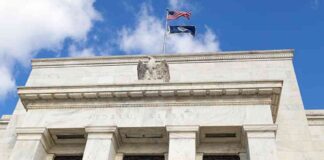The U.S. Federal Reserve is poised to make its first interest rate cut since the Covid-19 pandemic began, a move that is anticipated to have a significant impact on the global economy. While this decision has been widely expected, global investors are preparing for the repercussions of the Fed’s action.
Global Central Bank Peers
The Fed is following in the footsteps of several other central banks around the world, including those in the euro zone, the U.K., Canada, Mexico, Switzerland, and Sweden, all of which have already implemented rate cuts. These central banks have cited slowing growth and easing inflationary pressures as reasons for their decisions to lower interest rates. The Fed, often viewed as a global leader in monetary policy, is now under pressure to follow suit.
Impact on Currencies
One of the key concerns surrounding interest rate cuts is the effect they have on currency values. Higher interest rates typically attract foreign investors seeking better returns, which can lead to an increase in the value of the domestic currency. Conversely, lower rates can weaken a currency, making imported goods more expensive and potentially contributing to inflation. Central banks must carefully consider these factors when adjusting interest rates to maintain price stability.
Effects on the U.S. Economy
The Federal Reserve’s rate-setting decisions also have a significant impact on the U.S. economy. With recent concerns about a weakening labor market and the possibility of a recession, the Fed’s actions are closely watched by investors both domestically and globally. A rate cut by the Fed is expected to influence asset prices around the world, including commodities like gold and oil.
Market Reactions
Gold prices have surged in anticipation of a rate cut by the Fed, as lower interest rates tend to decrease the appeal of fixed-income investments like bonds. However, gold also serves as a hedge against inflation and a safe haven asset during times of market volatility. Oil and other commodities, priced in U.S. dollars, often receive a boost from rate cuts that stimulate economic growth and increase demand.
Emerging markets are particularly sensitive to changes in U.S. interest rates, as they can impact liquidity conditions and the attractiveness of different markets for investment. Equity markets globally have experienced volatility in recent months due to speculation about the timing and magnitude of rate cuts by the Fed. The uncertainty surrounding the Fed’s decisions has led to market fluctuations and investor uncertainty.
Future Rate Cuts
While markets are confident that the Fed will announce a rate cut, there is uncertainty about the extent of future cuts. Speculation about whether the initial cut will be 25 or 50 basis points has led to market volatility and uncertainty. The upcoming U.S. presidential election has added another layer of complexity to the situation, with questions about fiscal policy and its potential impact on inflation and monetary policy.
The Need for Larger Cuts
Historically, larger rate cuts by the Fed have preceded periods of economic turmoil, such as the Great Financial Crisis in 2007 and the tech bubble market rout in the early 2000s. A 50 basis point cut is seen as a signal of growth concerns and potential economic trouble ahead. However, some analysts argue that the focus should be on the broader picture of future rate cuts through 2025, indicating ongoing uncertainty in the economic data.
Market Reaction and Outlook
The reaction to the Fed’s rate cut is expected to be mixed, with equities potentially holding up until there is more decisive economic data. Defensive sectors may see increased interest as investors seek stability in uncertain times. The economic impact of the Fed’s decision will be closely monitored by investors and policymakers around the world as they navigate the challenges of a shifting global economy.

















